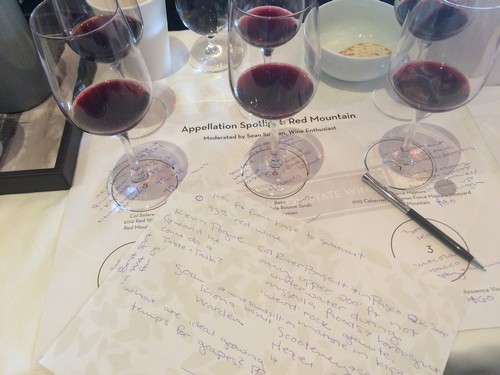3 Reasons to Keep a Case of Wine in your Car
‘Tis the Season of last minute gift grabbing: heading to someone’s house, a party, or an appointment, and wanting to give something better than a regift from last year. Keep a case of easy drinkers and pretty tissue handy all season long so you never show up empty handed.*
1 – Hostess Gifts
Perhaps the most obvious, but for a reason! People work hard to throw a party at their home and always appreciate the acknowledgement of a gift. And – if you call it a hostess gift instead of a bar contribution, they feel like they get to keep that special bottle to themselves.
2 – Family Gatherings…
…are always better with a little wine. Don’t trust Uncle Jack to have enough supply to keep everyone going through the course of a family get together. Bring a bottle of your own to make sure there is enough for the duration!
3 – Everyone ‘else’ on your List
I was getting my hair done 2 weeks before Christmas last year and someone popped in to give my stylist a bottle of wine. There I was, a winery employee, and totally empty handed. A nice bottle can go a long way for the people with whom you have a great relationship, but maybe didn’t make the major mall shopping list.

*Note: in no way am I suggesting that these wines should be consumed in your car, which is illegal. If you think you might be tempted, keep the corkscrew at home. Also, be careful about the weather! Wines left outside overnight when the temps drop could freeze, and that is really sad.
Top Picks for Thanksgiving
My husband just sent me a picture from the grocery store that already had a bunch of Christmas decorations on display. He was truly sad that “the grocery store skipped Thanksgiving!” and also confused as to why someone would want a planter in the shape of Santa’s boot. I can’t blame him on both accounts.
In all honesty, I don’t mind getting a little ahead on Christmas and gifts and whatnot (I’ll be honest…I just sent out a gentle gift pack blast to our email list…but waited until after Halloween!). It’s always been a personal goal to have my shopping done before Thanksgiving, with an extra case of wine on hand for last minute gifts. That way, I can just enjoy the weeks that follow.
However, I am not okay with skipping Thanksgiving all together. It is truly one of my favorite holidays. Good food, beautiful décor, and my best friends and family all in one place. I keep hearing people talk about serving cheap wine at Thanksgiving so one’s obnoxious uncle doesn’t get into it. However, I don’t worry about that in my house, and would like to drink good wine that pairs well with great food on this day of feasting.
This year, my picks for Thanksgiving are 2014 Klipsun Vineyard Optu White (quite possibly my favorite vintage of Optu White), along with 2012 Red Mountain Merlot and 2012 Champoux Vineyard Magna Red Wine. The Optu White is to serve with appetizers – a simple cheese board and a gorgeous crudité platter.
Both of the reds are perfect for Thanksgiving. They have bright acidity (good because they’ll help cut through all of those rich foods on the table), soft tannins (good because they won’t overwhelm any of the dishes), and are down right elegant wines to drink. We’ll serve these wines with the dinner itself to match all of those rich and earthy toned foods common to the Thanksgiving table. If you have people that want to drink white wine with dinner, I guarantee that Optu White is rich enough to stand up to the dinner and is going to be an awesome pairing with the turkey.
While we’re at it, I think I’ll throw in a bottle of the Late Harvest Semillon. This is a special occasion…a great time to open a special bottle! This wine is one of my favorites for any fruit based desserts, but is going to be great with that pumpkin pie as well.
Cheers! No matter what your own agenda is during these final weeks of 2015, I hope you find the time to celebrate one holiday at a time with the ones you love.

When I grow up (or don't have a 2 year old to tear the house apart), I am going to create beautiful scenes like this for Thanksgiving.
Fidelitas Staff Retreat 2015 - Inland Desert Nursery
To say that we are in love with our new baby vines might be an understatement. This spring, as we planted our Estate Vineyard, the staff at Fidelitas anxiously awaited any new information and pictures coming from Charlie and the Vineyard crew. The road was marked? End posts delivered? IRRIGATION? What’s getting planted today? Are they greenhouse plants? Dormant rootings? Who knew we could be so excited.
When planning our Staff Retreat this year, visiting Inland Desert Nursery was perhaps the most requested activity. Team Fidelitas wanted to see where it all begins. We wanted to see the grafting and dormant vines, and tiny, tiny plants. To us, this was thrilling, so we were pretty excited when Ryan welcomed us in (I think we may have been the first group who actually wanted a tour). Inland Desert is a family owned and run operation dedicated to propagating and distributing clean vines (we’ll come back to that later) across North America. Based between Benton City and Prosser, they do much more than just Washington vineyards and send plants to more than 30 states.
At the risk of going on and on about baby vines, I’ll try to summarize what I learned that day:
Inland Desert works with the Clean Plant Center to ensure that all vines are CLEAN. This means that the vines they are working with have been certified as free from targeted viruses. Since wine grapes are propagated via cuttings, it is so, so important to make sure that they are virus free, otherwise these viruses can spread quickly, affecting entire vineyards.
They sell more grape varieties and clones than I knew existed. I’ve gone through my Sommelier training, plus some other wine coursework, and read a million wine books, and they have grapes I’ve never heard of before (Kay Gray?). If they don’t have it, they’ll find it for you. The catalog these guys carry around looks like a phone book. Remember, a grape varietal (eg. Cabernet Sauvignon) can have many, many clones. We have 3 Cabernet Clones planted in the original 2009 planting and 5 in the 2015 planting. Clones are genetically identical but offer different characteristics, like earlier ripening, looser grape clusters, more tannins. Think of it like identical twins but one is taller and can run a little faster.
cuttings from the mother plant
The talented staff has many ways of giving us little vines. As you know, there has been A LOT of planting on Red Mountain this year, which meant that we got to plant dormant rootings and green potted plants. In Washington, we have a low presence of phylloxera (a tiny little louse that likes to nibble on the roots and nearly wiped out France in the late 19th century), mostly due to our sandy soils, which these critters don’t like, so we can plant vines on their own rootstock. However, areas like Oregon and California battle it a bit more so they need to have vines grafted on to a rootstock that is phylloxera resistant. Here is the coolest part: to grow a new plant, they get a stick of an old plant (a mother plant) and stick it in the dirt. That stick starts growing and once it has two buds, they clip it, put that new stick into dirt, and it starts growing. That mother plant just keeps going and going and going (as good mamas do) and pretty soon you have a greenhouse full of little vines.
red mountain bound merlot
There is so much more to learn about this whole process. If you are at all interested, I’d highly recommend checking out the Inland Desert Nursery website (and searching for the amazing Charlie picture while you’re there).
Our Week in Pictures, Magna Edition, June 26 - 27
This past weekend, we hosted a group of members from our Magna Wine Club for a dinner on Red Mountain. This was our third annual event, and some dared to call it the best yet!


We started the weekend with an early morning hike through the new Estate Vineyard. I'm not sure that we could call our attempt to beat the heat succesful.
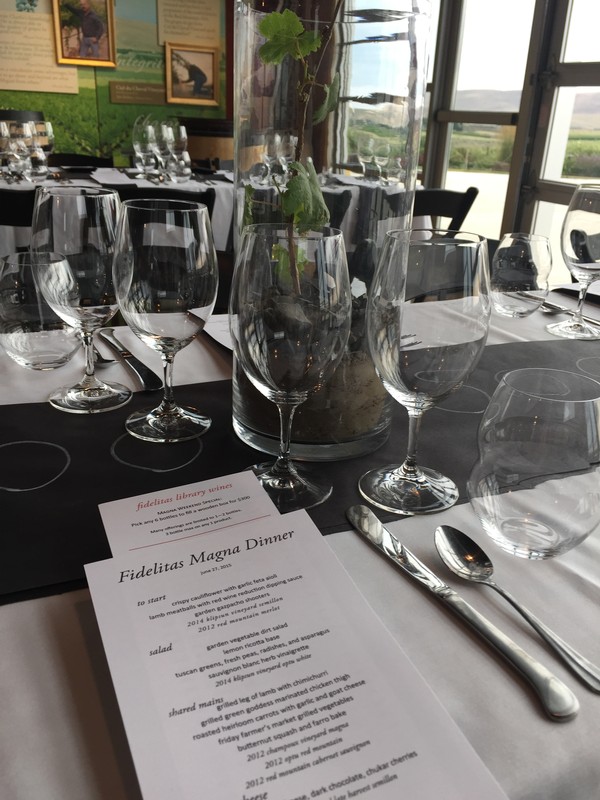
Past years have allowed for dinner on the patio, but the triple digit temps forced us into the AC in the tasting room. It was cozy but the food was great and the wine was flowing! (take a peek at the awesome centerpieces: little cabernet vines!)

Guests loved doodling between courses...
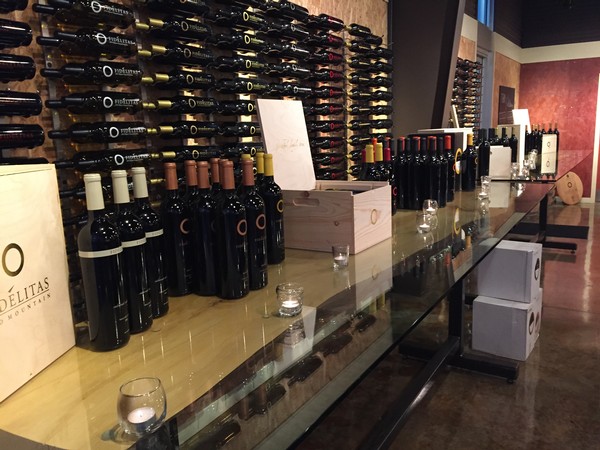
...and loved the impressive display of library wines even more.
A wonderful weekend for all! Thanks to my great staff who put this on. They were working so hard this weekend, we didn't have the time to take pretty pictures of our own activities.
Our Week in Pictures, June 15 - 21
The Mariner's sure got our attention this week!
Jess and Charlie hosted a wonderful group in Suite 25. Fidelitas wines were flowing and the Mariner's played an awesome game! (if you squint, you can maybe see Michelle just above the scoreboard)

How great are our members, James and Kristi?
Erin took her husband for a suprise Father's Day game.
Chelsea chose wine over baseball and checked out our neighbors.
And Skye got to do a little babysitting...
A Tour of Willamette
Ben and I celebrated our 5-year anniversary this past week. Time flies. Since we got hitched on the slopes of Red Mountain, it only seemed appropriated to do a wine themed trip to celebrate the date. We headed to our neighbors to the south to explore the Willamette Valley. Our three days of vacation took us to 6 wineries, a slew of restaurants, and one tiny little ferry. Here is what I learned:
Dirt is a big deal
Willamette Valley is over 52,000 square miles, subdivided into 6 sub-avas. Most vineyard sites lie between 200 and 1000 acres, but the AVA hosts mountains as tall as 1,600 feet and is protected by the 3,500’ elevation coastal range. My point? There is a lot of variability. Some
hosts mountains as tall as 1,600 feet and is protected by the 3,500’ elevation coastal range. My point? There is a lot of variability. Some
vineyards cited sediment from the Missoula floods like we have on Red Mountain, others said they hosted marine sediment from when the Pacific Ocean covered the region. Alexana Winery told us that they have 15 different soil types in their 80-acre property, with 8 of those on display as the front of their tasting bar.
Clones are key
When you are essentially working with just one varietal (pinot noir) and all of that variability in the landscape, it makes sense that growers and winemakers are going to get geeky about clones. It was fun for me to see it in action since we are exploring the best clones for our own Estate Vineyard right now. (Remember, clones are genetically identical to their parent, reproduced via bud or shoot. Using clones is a way of promoting grapes that are more disease resistant, provide more or less skin to juice ratio, produced a desired yield…overall picking the right plant for the right vineyard. This is not genetically modified stuff…just natural selection with a little assistance via grafting.)
PS – I know that there is more than just pinot noir. We tasted some lovely pinot blanc and chardonnay as well :)
 Vintage really matters
Vintage really matters
Willamette Valley is much more temperate than Washington’s growing regions. Higher rainfall, fewer growing degree days, cooling coastal breezes all contribute to being pinot friendly, but it also means that we can really taste the difference vintage to vintage. Just a little more heat in 2012 showed a lot more ripeness in the wines (in some cases, to a point of being uncharacteristic of pinot noir). Pretty much every winery mentioned that their overall tonnage and case production varied greatly based on the harvest year. We’ve seen a bit of this in Washington (2004 in Walla Walla, 2010/2011 in the Horse Heaven Hills) but definitely not to the same extent.
They are a little different than us
Just like Seattle and Portland. So close that to an outsider, you might not tell the difference, but there definitely is one. The tasting rooms were GORGEOUS. Most of the ones we visited were the ‘lifelong dream’ of a couple that had established their resources elsewhere then came to the Valley. The overall feeling from a visitor is that everything was just a little more palatial and polished than us Washington folks. More so than that, the stories were different. Many wineries almost justified the fact that they sourced their fruit from other vineyards and every rose we had was introduced as being an ‘intentional’ part of their line up. Biodynamic, organic, and sustainable certifications were a big part of the selling points as well. All great stuff…just different.

Places we tasted and wines we loved (in the order of our visit, nothing else)
Winderlea: 2014 rose of pinot noir and 2014 meredith mitchel pinot blanc
Alexana: 2014 pinot gris and 2013 revana vineyard pinot noir
Soter: 2010 mineral springs brut rose and 2012 north valley pinot noir
Bergstrom: 2013 sigrid chardonnay and 2013 gregory ranch pinot noir
Brooks: 2014 pinot blanc and 2011 rastaban pinot noir
Our Week in Pictures, June 8 - 14
Yes - we work hard. But part of the fun is getting out and exploring what's around us!
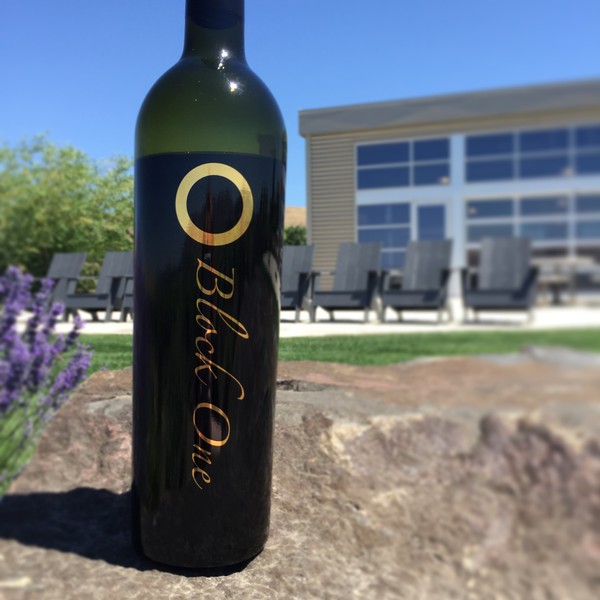
Erin 'accidentally' opened some Block One on Red Mountain while hosting 13 Bones and our wonderful visitors. (Missed 13 Bones this go around? They'll be back July 11th!)

Chelsea came across the pass to find terrible weather in Western Washington during UW Graduation and whiskey tasting.

Michelle found herself sipping Fidelitas during sunset at Golden Gardens.

And I apparently drank my weight in rose while touring Willamette Valley, celebrating my 5-year wedding anniversary. More to come on the Willamette wine region later this week!
Our Weekend in Pictures, June 1 - 8
Charlie and Terri attended a wedding in Helena, Montana: "It is quite the place. Built in 1905 in a Gothic style of architecture. The building feels like it fell out of the sky and should be somewhere in Austria."
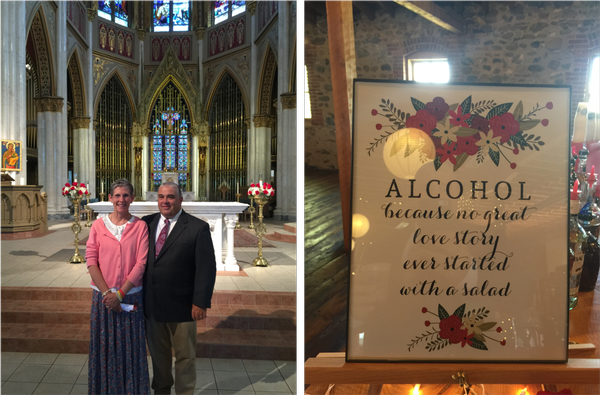
Chelsea (along with the rest of the staff) toured the newly opened WSU Wine Science Center in Yakima, finishing off the evening enjoying dinner with friends.

Erin represented Fidelitas at the beautiful (and very hot) Vintners in Vineyard event at Col Solare. The next morning "we celebrated Dave's 3 month post-op on his second hip and spine fusion with a hike up Badger Mountain."

Jess attempted to stay cool, enjoying a backyard kiddie pool party, then launched the boat for the summer with her family.

And someone had to hold down the fort. Michelle and Skye had some action shots from the Member for a Day event in our Tasting Rooms over the weekend. The popcorn bar was a hit!

Our Weekend in Pictures, May 30 - 31
The biggest news of the weekend? Our leading lady in Woodinville, Skye, got engaged to her longtime sweetie, Kris. Congrats to the happy couple!
Erin enjoyed the view on the Columbia River.

Chelsea made a move, and took the pups along too.

Michelle finished her patio, and took the time to enjoy a little white wine with dinner on it.
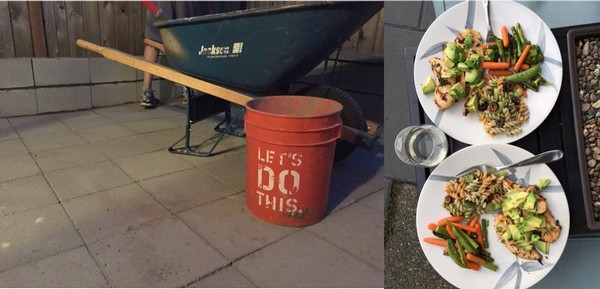
We hope your weekend was as great as ours!
Appellation Spotlight: Red Mountain
This past weekend, I was lucky enough to sit in on the Red Mountain Seminar that was a part of Taste Washington weekend. We gathered in one of the conference rooms at the Seattle Four Seasons and were lucky enough to watch ferry boats come in and head back out while listening to the wise words of the panel before us. Our moderator was Sean Sullivan, who has his own blog, Washington Wine Report, and is a contributor to the Wine Enthusiast, reviewing wines from Washington and Oregon. I love Sean because has this never ending thirst for knowledge, meaning he asks real questions and honestly wants detailed answers. In an industry that seems to be changing daily, that type of inquisitiveness is a perfect fit.

When I first sat down to write this article, it quickly turned in to an 8-page essay. Knowing that will never be read in the world of small, winery blogs, I decided to revise and just add a few amazing (paraphrased) quotes that I heard that day.
Kevin Pogue, PhD at Whitman College, geologist extraordinaire
Only the upper 200 feet of Red Mountain was showing during the Missoula Floods, meaning that the portion underwater received some great rocks from all over. In addition to the basalt, sand, silt, and gravel you find all over Red Mountain, there are some “weird rocks” like marble and granite mixed in.
What he looks forward to in the next 5 to 10 years? Jumping in more pits as vineyards are developed.
Jim Holmes, Ciel du Cheval Vineyard Owner and Grower, and one of the founders of Red Mountain
So much good stuff. The first people on Red Mountain were geeky and passionate about quality. They embodied the culture of terroir. Wines from Red Mountain can be picked out of a line up because they are richer/thicker/darker yet balanced/fresh/fun. People looking for a good wine story get “I went out, smelled the air, stomped the ground. That’s it.”
In 5 to 10 years? Jim sees new adventures, which makes farming constantly exciting. His definition of success is making what you’ve already done even better.
Charlie Hoppes, Fidelitas Owner and Winemaker
Fidelitas is currently sourcing from 11 Red Mountain vineyards and producing 17 different Red Mountain wines from a wide array of clones. Charlie loves Red Mountain for the intense fruit, tannic structure (which is managed in the cellar), and great variety within such a small region.
Charlie sees that there is still a lot to learn in the next 5 to 10 years, with new plantings and new clones bringing new flavors to experiment with.
Bob Betz, MW, Betz Family Winery Founder and Winemaker
Red Mountain brings so much to a wine, which can been seen in the phenolic make up of that wine. The chemical compounds that add to the flavor, color, and mouthfeel of Red Mountain wines are almost exaggerated (my word, not Bob’s) in Red Mountain wines, making for some pretty intense stuff. 2012 is what could be considered a “Goldilocks Vintage” with 2011 being too cold, 2013 being too hot, and 2012 being just right in between.
Bob believes that in the next 5 to 10 years, the coming development will add to the dynamics and awareness of Red Mountain, but there are naturally acreage constraints in play as well.
Paul McBride, Force Majeure Owner
If Rhone can do it, why can’t Washington? Paul took the vineyards on Red Mountain literally to new heights with the Force Majeure planting, where elevation and slope are drastically different from the rest of the AVA. Additionally, he brought in more Rhone varietals (Syrah, Mourvedre) to otherwise Cabernet dominated region, and has been pleased with the results.
In the next 5 to 10? An increased presence in the AVA, means more marketing, meaning national and international recognition. The people will be the ones who balance quality and passion.

In addition to hearing these five experts speak about the region, we got to taste through six incredible wines and hear from these wineries as well. The room was truly jam packed with people passionate about Red Mountain. All sourced from the same 4,040 acres, these wines could not be more different from one another. What a great way to start day 2 of Taste!
Kiona 2012 Old Block Cabernet Sauvignon
Soos Creek 2012 Ciel du Cheval Red Wine
(62% Cabernet Sauvignon, 24% Cabernet Franc, 14% Merlot)
Fidelitas 2012 Quintessence Vineyard Cabernet Sauvignon
Col Solare 2012 Red Wine
(85% Cabernet Sauvignon, 7% Cabernet Franc, 4% Merlot, 4% Syrah)
Betz 2012 La Cote Rousse Syrah
Force Majeure 2012 Cabernet Sauvignon







